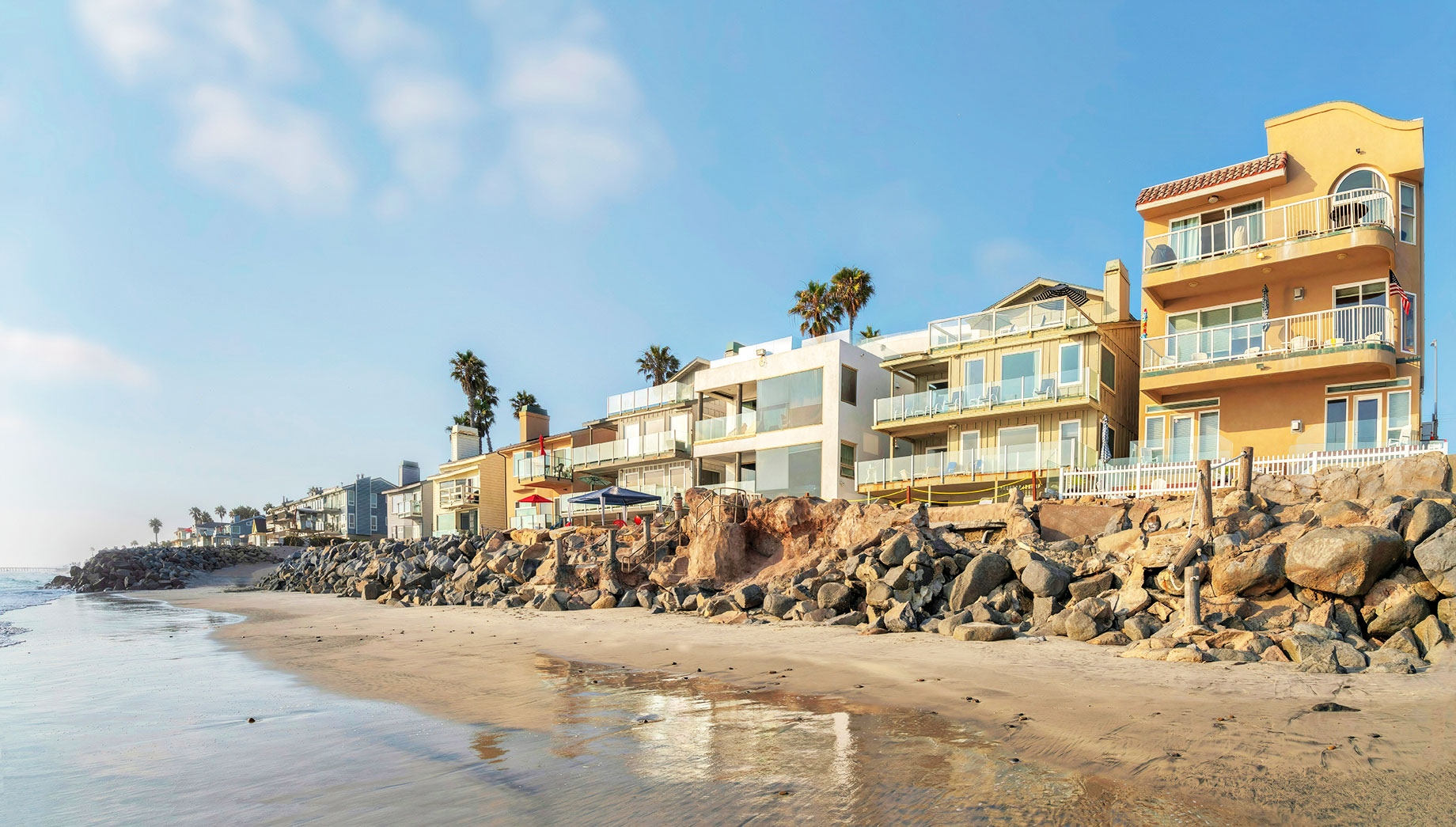
Building a beach home requires more than just stunning views—it demands a balance of beauty, durability, and safety. From selecting weather-resistant materials to incorporating smart design elements, creating a coastal retreat that stands the test of time is essential. Here’s how to build a safe and beautiful beach home the right way.
Choosing the Right Materials for Coastal Durability
One of the primary concerns when constructing a beach home is selecting materials that can withstand the harsh coastal environment. Salt, humidity, wind, and sun are constant factors to consider, and using materials like stainless steel, treated wood, and specific types of concrete can enhance durability. Florida, for example, is home to some of the toughest building codes in the nation, guiding homeowners in their material choices.
Different materials offer varying levels of resistance to the elements. Composite materials are often recommended for their resilience and longevity, as they resist decay and insect infestation. Selecting materials that balance durability and cost ensures that the home remains both safe and financially accessible.
Another aspect to consider is energy efficiency, which plays a significant role not only in sustainability but also in cost savings. By using materials that reflect heat and insulate effectively, beach homes can reduce energy costs year-round. Additionally, eco-friendly roofing and wall insulation materials contribute to a greener and more resilient home.
Essential Safety Features for a Storm-Resistant Beach Home
Safety is paramount in beach home design, especially given the susceptibility of coastal areas to storms and hurricanes. Reinforced walls, impact-resistant windows, and elevated foundations are basic yet crucial features to incorporate. Investing in a fortified roof can provide an extra layer of protection during extreme weather events.
When natural gas is first transported through transmission lines, it can be passed through at pressures up to 1500 pounds per square inch (PSI). By the time it reaches a household piping system, pressure has been reduced to under 0.25 PSI– or less than the pressure created by a child blowing bubbles into milk through a straw. This pressure regulation ensures that natural gas use in coastal homes remains safe and manageable.
A comprehensive storm preparation plan, including emergency kits and evacuation routes, is equally necessary. Homeowners are advised to secure insurance that specifically covers storm damage, given the high risk associated with coastal properties. Choosing the right safety features and preparing accordingly can significantly mitigate potential damage from natural disasters.
Design Tips for a Stylish and Functional Coastal Retreat
Functionality is as vital as aesthetics when it comes to creating a beach home that serves as a relaxing retreat. Open floor plans enhance airflow and light, giving spaces a naturally bright and airy feel. Incorporating certain coastal elements like driftwood-inspired furnishings and ocean-blue accents can reflect the serene environment outside.
Furniture selection should prioritize materials that withstand moisture, such as teak or marine-grade metals. Meanwhile, indoor-outdoor living spaces blur the lines between the interior and exterior, making it possible to enjoy the scenery while protecting against harsh elements. Such designs not only maintain visual appeal but also enhance the usability of the home.
Homeowners are encouraged to include ample storage solutions to keep the space clutter-free and focus on simple, clean lines in decor to evoke a sense of calm. Multi-purpose furniture pieces can add to the efficient use of space, further supporting a stylish yet functional home environment. These thoughtful design choices ensure that the space remains inviting and practical.
Sustainable Solutions for Long-Lasting Beachfront Living
With the increasing awareness of environmental impact, sustainable solutions are vital in the construction of beach homes. Renewable energy sources such as solar panels can significantly reduce the home’s carbon footprint, while also cutting energy costs. Implementing a rainwater collection system can support eco-friendly water usage and maintenance.
Landscaping with native plants not only enhances the beauty of the property but also aids in erosion control and requires less water and maintenance. Attention to the selection of sustainable building materials, such as reclaimed wood, further contributes to environmental conservation. These considerations promote a lifestyle that harmonizes with the natural surroundings.
Waste management and recycling systems can be integrated into the home design to foster sustainable living practices. Reducing waste through conscientious consumption and implementing composting strategies align with eco-friendly goals. The collective adoption of these sustainable solutions results in beachfront living that is responsible and enduring.
Smart Home Technology for Safety and Convenience by the Shore
Integrating smart home technology not only adds convenience but also enhances safety for beach homes. Automated systems can manage lighting and climate control, optimize energy consumption according to actual needs and reduce unnecessary energy use. Moreover, remote monitoring systems allow homeowners to check on their property even when they’re away.
Your builder will handle permits and inspections, making sure everything is up to code. In Connecticut, the average cost for permits is around $2,500. It’s important to remember that smart technology can often integrate into aspects of these inspections, ensuring both compliance and state-of-the-art security features.
From smart locks to advanced security cameras, technology can significantly improve peace of mind by offering robust protection against unauthorized access. Water leak sensors and automated storm shutters further strengthen the home’s defenses against environmental and human threats. These smart solutions tie together various elements of the home, making it genuinely modern and secure.
The process of building a beach home involves careful consideration of location, materials, safety, cost, and design. By addressing these key areas, you can create a haven that is both safe and stunning, offering peace and enjoyment for years to come. Building a beach home is a complex yet rewarding endeavor that, when done thoughtfully, results in a lasting sanctuary.